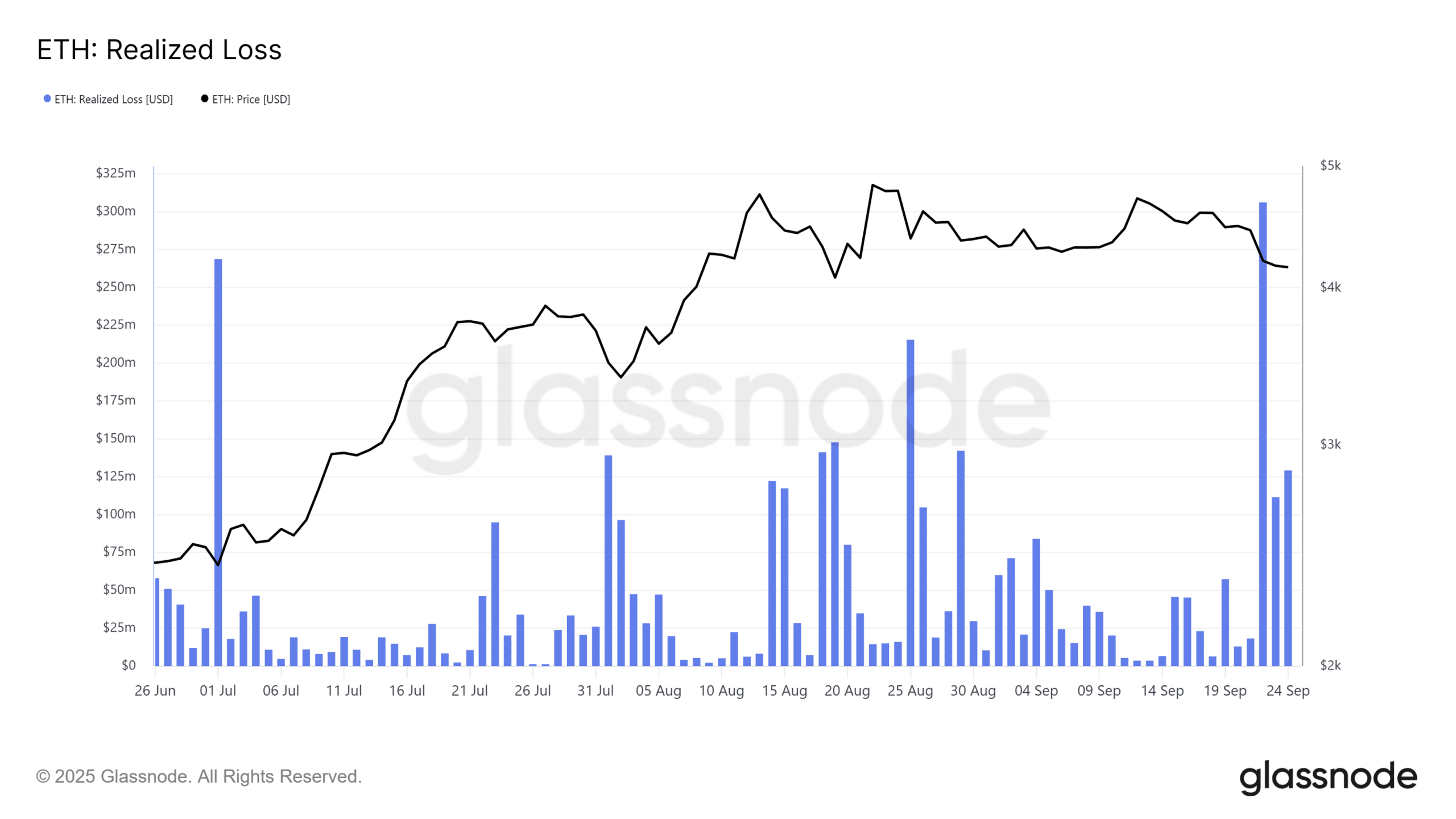Has ETH bottomed? Short answer: signs point to a tactical reset rather than a confirmed bottom. Major whale accumulation—10 wallets buying ~210,000 ETH at an average $4,100—plus elevated realized losses and ETF outflows suggest a redistribution phase that may precede a measured rebound.
-
Whales accumulated ~210k ETH at ~$4,100 each
-
ETH ETFs recorded $290M in outflows over three days, limiting institutional participation
-
Realized profit peaked at $2B (Sept 18); realized losses hit $300M (Sept 22)
Meta description: Ethereum bottom? ETH shows whale-led accumulation and institutional outflows—read a concise, data-backed analysis and next-step guidance from COINOTAG.
Has ETH bottomed?
Has ETH bottomed? On-chain and market signals point to a redistribution phase rather than a confirmed market bottom. Whale wallets accumulating ~210,000 ETH at an average cost near $4,100 indicate strong holder interest, while ETF outflows and realized losses show institutional caution and short-term position cuts.
How are whales influencing ETH’s price action?
Ten large wallets reportedly accumulated roughly 210,000 ETH, spending an estimated $862.85 million at an average cost basis of $4,100/ETH. Large-scale accumulation can absorb sell pressure and support prices, but it does not guarantee immediate upside if liquidity remains thin.

Source: Lookonchain (reported accumulation data). Whale buys often precede multi-week range consolidation as liquidity redistributes from weak hands to larger holders.
Why are institutions holding back?
Institutional hesitation is visible in recent ETF flows: ETH exchange-traded funds recorded roughly $290 million in outflows across three days, the largest short-term withdrawal since a prior $1 billion exit in late August/early September. That pullback constrains near-term demand from large allocators.
Market metrics also show profit-taking: realized profit reached a four-year peak of $2 billion on Sept 18 (price near $4,589). Conversely, realized losses rose to around $300 million on Sept 22, indicating underwater holders reducing exposure.

Source: Glassnode (realized loss data). Elevated realized losses show capitulation among shorter-term holders, reducing immediate buying power.
When could a durable rebound follow?
A durable rebound commonly follows when: 1) institutional flows stabilize or reverse, 2) realized losses decline and supply tightens, and 3) derivatives positioning de-leverages. Historically, similar drawdowns produced strong rebounds once these conditions aligned, but timing varies.
Frequently Asked Questions
Is whale accumulation a reliable buy signal for ETH?
Whale accumulation signals demand concentration and can support higher prices, but it’s not a standalone buy signal. Combine whale activity with stable institutional flows and reduced realized losses for stronger confirmation.
How big were recent ETF outflows and what do they mean?
ETH ETFs recorded about $290 million in outflows over three days. Large outflows typically signal reduced institutional conviction, which can cap rallies until inflows resume or on-chain supply tightens.
What does realized profit and realized loss tell traders?
Realized profit indicates coins sold at gains; recently this peaked at $2B, signaling profit-taking. Realized loss (about $300M) reflects holders selling at a loss and often marks short-term capitulation phases.
Key Takeaways
- Whale accumulation: 10 wallets bought ~210k ETH (~$862.85M at ~$4,100 each), supporting a redistribution thesis.
- Institutional caution: ETH ETFs saw ~$290M outflows, limiting near-term demand from large allocators.
- Market structure: High realized profit and rising realized losses show a mix of profit-taking and capitulation; monitor flows and leverage for confirmation.
Conclusion
In short, current evidence suggests Ethereum is in a redistribution and reset phase rather than a confirmed bottom. Whale accumulation and on-chain indicators show strong-holder interest, while ETF outflows and elevated realized losses reveal institutional caution. Monitor flow stabilization, realized-loss declines, and derivatives de-leveraging for clearer signs of a sustained recovery. — COINOTAG, published 2025-09-25






